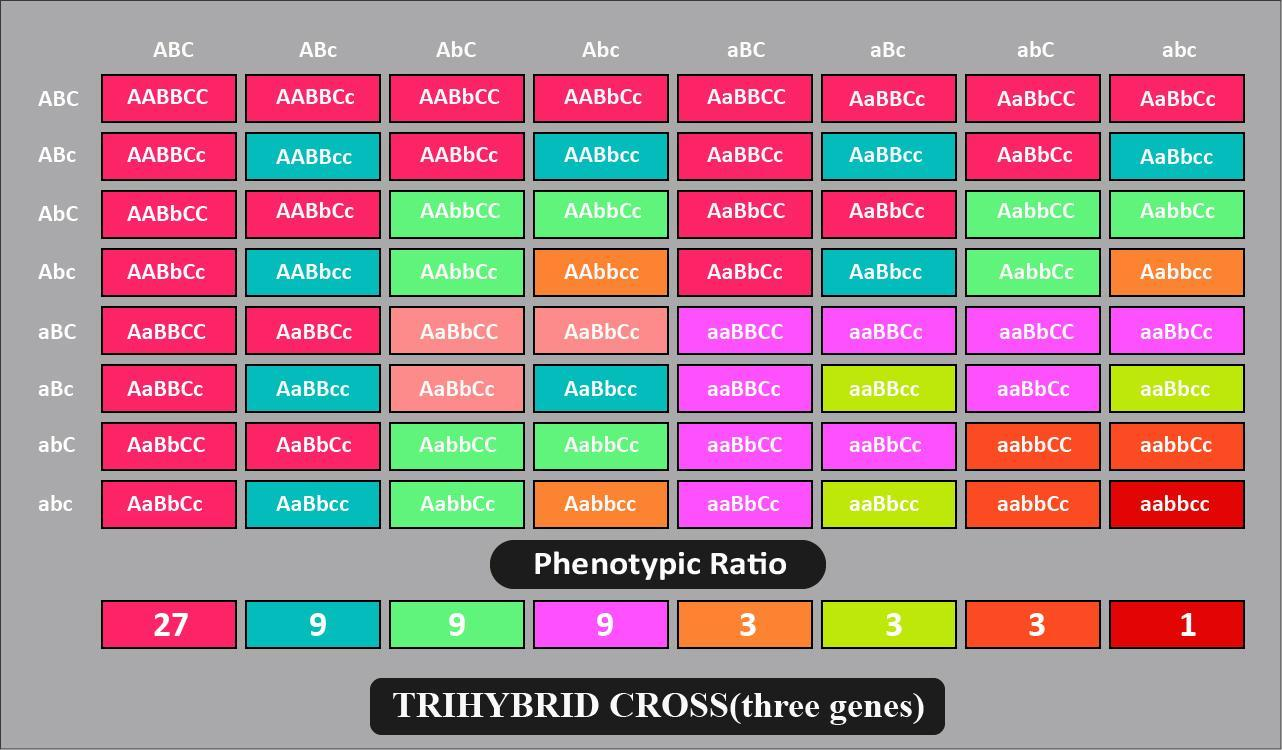Question
Question: In the cross AaBBcc  aaBbCc, what is the probability of an offspring that is aaBbcc?
aaBbCc, what is the probability of an offspring that is aaBbcc?
(a) 1/2
(b) 1/4
(c) 1/8
(d) 1/16
Solution
In a trihybrid cross, each gamete gets one of the alleles from each parent. Hence, we perform such crosses in punnett squares. Trihybrid cross follows all the laws given by Mendel i.e. law of segregation of gametes, law of dominance and law of independent assortment.
Complete answer:
Here, let us break down the given problem into small parts. First, we will consider a cross between Aa and aa. We will look for priority of getting a homozygous individual (since we want the final genotype to be aaBbcc.)
| A| a
---|---|---
a| AaHeterozygote| aaHomozygote
a| AaHeterozygote| aaHomozygote
So, the probability of getting a homozygote (aa) is 2/4 i.e. 1/2.
Similarly, let us look into the cross between BB and Bb.
| B| B
---|---|---
B| BBHomozygote| BBHomozygote
b| BbHeterozygote| BbHeterozygote
So, the probability of getting a heterozygote (Bb) is 2/4 i.e. 1/2.
Last part of the given genotype-aaBbcc is ‘cc’. Now, let us look into a cross between parental parts cc and Cc.
| C| c
---|---|---
c| CcHeterozygote| ccHomozygote
c| CcHeterozygote| ccHomozygote
So, the probability of getting a homozygote (cc) is 2/4 i.e. 1/2.
In order to get all of them happening together, we will now reduce the overall chance for each genotype. So, we will multiply all three probabilities as - 21 ×21×21 = 81
So, the correct answer is ‘1/8.’
Note: Traditional method of solving this problem can be by using the punnett square. So, if we look into the punnett square of a normal trihybrid cross, we can get the probability by looking into the genotype.

